Here I am again, Scully, up late pursuing this obsession with ESP. You keep telling me it has to be a fraud, that they’ve found serious errors with statistical analyses of ESP data, that the Ganzfeld experiments at Edinburgh and the card-guessing experiments at Duke in the thirties were inconclusive (at best, you’d probably say), that no matter what Upton Sinclair did or how many Zener card trials I produce, you’d sooner believe there was something wrong with the very mathematics of probability than believe in ESP.
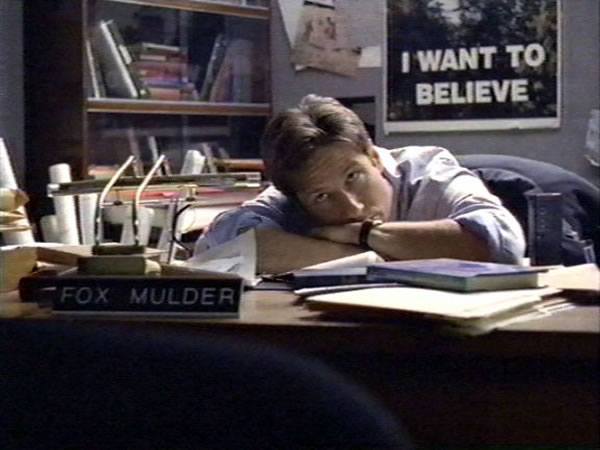 But I think you’re just scared, Scully. Scared to believe. Scared to be labeled “spooky” and sent down to the basement of the FBI building with me. (You were sent to debunk my work, after all.) We both know the truth (and the truth is out there). You, like me, have seen and felt things you don’t know how to explain.
But I think you’re just scared, Scully. Scared to believe. Scared to be labeled “spooky” and sent down to the basement of the FBI building with me. (You were sent to debunk my work, after all.) We both know the truth (and the truth is out there). You, like me, have seen and felt things you don’t know how to explain.
I know you’ve felt the eerie chill of precognition—like when you woke from a dream and saw your father’s apparition sitting in your living room just seconds before learning of his death? (Dream transference is one of the active theories of telepathy, Scully.) I know you’ve talked to a psychic who could predict the exact time, place, and manner in which people were going to die. And I remember when you saw Gibson Praise and, in fact, yours truly excel at Zener card guessing. And I know you’ve heard about the Stargate Project and other military experiments with remote viewing. (I’ll omit for now the issue of alien-human hybrids, though you know about those, too.) I think you’re afraid of the truth: that the reason I’m not dissuaded from believing in ESP by all the evidence to the contrary is that all the evidence to the contrary is not entirely dissuasive.
* * *
Let’s go back to the thirties, Mulder. Indulge me, please. Professor J. B. Rhine gathers as many kooks and mystics and mind readers as he can get his hands on, drags them all to his lab at Duke University. He asks them to guess symbols from a deck of so-called Zener cards—25 cards, each bearing one of five “mystical” symbols.  Some people get lucky and guess as many as 25 out of 25 correctly in a single run (without being shown their results). But just as many supposed psychics claim their energy is blocked or they’ve suddenly lost their abilities and score embarrassingly. I mean you’d get five out of 25 correct just by guessing the same symbol every time. Over 907,030 trials, the group of psychics gets an average of just 5.36 out of 25 correct. That’s your psychic power?
Some people get lucky and guess as many as 25 out of 25 correctly in a single run (without being shown their results). But just as many supposed psychics claim their energy is blocked or they’ve suddenly lost their abilities and score embarrassingly. I mean you’d get five out of 25 correct just by guessing the same symbol every time. Over 907,030 trials, the group of psychics gets an average of just 5.36 out of 25 correct. That’s your psychic power?
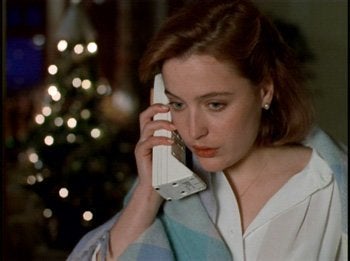 Now, you tell me that result is statistically significant; that it’s extremely unlikely to have happened that way just by chance. (“In fact, it’s well above the standards for significance used in normal-science research,” Professor Stephan A. Schwartz, spokesperson for the Parapsychological Association, told you over the phone.) But that doesn’t mean it can’t be chance, and—more importantly—it doesn’t rule out fraud or any alternative (pronounced “sensory”) explanation for the phenomenon you insist on describing as “ESP.” Were the conditions really controlled? What if the psychics were giving one another subtle clues? Or cheating in ways the experimenters couldn’t perceive? They’ve had trained magicians watch these Zener card experiments, Mulder, and they’ve spotted cheating and sleight of hand that goes unnoticed by the researchers.
Now, you tell me that result is statistically significant; that it’s extremely unlikely to have happened that way just by chance. (“In fact, it’s well above the standards for significance used in normal-science research,” Professor Stephan A. Schwartz, spokesperson for the Parapsychological Association, told you over the phone.) But that doesn’t mean it can’t be chance, and—more importantly—it doesn’t rule out fraud or any alternative (pronounced “sensory”) explanation for the phenomenon you insist on describing as “ESP.” Were the conditions really controlled? What if the psychics were giving one another subtle clues? Or cheating in ways the experimenters couldn’t perceive? They’ve had trained magicians watch these Zener card experiments, Mulder, and they’ve spotted cheating and sleight of hand that goes unnoticed by the researchers.
Really, Mulder, I think you ought to turn off the TV, stop eating sunflower seeds, and get some rest. All this ESP-hunting must be taking its toll on your personal life.
* * *
Schwartz also said that research in parapsychology has evolved since the thirties, Scully. That they’ve developed ways of getting around those statistical arguments by moving away from stupid parlor tricks like card guessing.
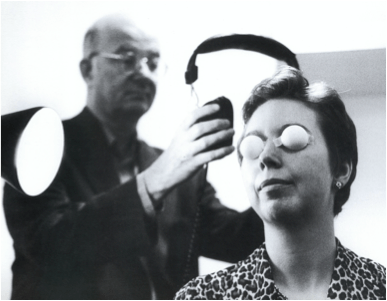
Take the so-called Ganzfeld experiments, for example. Completely controlled sensory conditions. They put you in a soundproof, electrically shielded room by yourself and tape halves of a Ping-Pong ball over your eyes. Then they shine a bright light at you, creating a monotone visual field. They put headphones over your ears and play a monotonous sound, like the crashing of ocean waves or radio static. And in another room, sometimes even a room miles away, someone tries to transmit an image to you telepathically—an image selected randomly by a computer, I might add. While you’re under the Ganzfeld conditions, you attempt to describe whatever you can about the image out loud. Have you seen the results, Scully? Just for example: From an array of four possible images, some people—in particular, visual artists, actors, musicians, and writers—can guess the correct target as frequently as 47 percent of the time. There’s your psychic power, Scully.
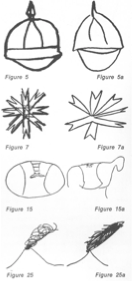
And I know you’re sick of hearing about Upton Sinclair, but it’s true. He and his second wife, Mary Craig, were able to telepathically transmit images between them stunningly well. Craig believed she had “minor mind-reading” abilities. So, when she and Sinclair were apart from each other, he would attempt to mentally transmit an image. She, without knowing what the image was or when exactly he was transmitting it, would attempt to draw it. Tell me it doesn’t seem like they formed some sort of psychical bond, Scully, because looking at these images, there’s a striking similarity. Maybe it can’t be precisely quantified, but are you sure it isn’t real?
* * *
Well, first of all, Mulder, you’re getting careless. You aren’t even bothering to distinguish between forms of paranormal ability. You’re talking interchangeably about what’s known as telepathy, where the subject supposedly receives information from another person, and clairvoyance, where the subject seems to receive information about the physical world directly. I mean which of these abilities are your Zener cards or image-guessing experiments supposed to demonstrate? (And if you’re testing for clairvoyance, how can you ever completely remove human beings from the equation?)
 At most, you have a few isolated trials that show possibly extraordinary degrees of correspondence between images in two people’s minds. Even ruling out fraud (and you shouldn’t rule out fraud), there’s still no reason to assume any sort of woo-woo mystical ability is involved. What if these people just happen to have finely attuned senses, or heightened emotional capacities such as empathy, conditioned by years of experience? What if they’re picking up the subtlest sensory hints about other people’s states of mind, only our experiments aren’t capable of recording their methods? It would certainly explain your beloved Upton Sinclair and Mary Craig example. They would have been able to make all kinds of inferences from each other’s letters; they were husband and wife!
At most, you have a few isolated trials that show possibly extraordinary degrees of correspondence between images in two people’s minds. Even ruling out fraud (and you shouldn’t rule out fraud), there’s still no reason to assume any sort of woo-woo mystical ability is involved. What if these people just happen to have finely attuned senses, or heightened emotional capacities such as empathy, conditioned by years of experience? What if they’re picking up the subtlest sensory hints about other people’s states of mind, only our experiments aren’t capable of recording their methods? It would certainly explain your beloved Upton Sinclair and Mary Craig example. They would have been able to make all kinds of inferences from each other’s letters; they were husband and wife!
Or what if it’s something even more mundane? What if these kinds of mental congruence are just inherent in the human condition? We’ve evolved over millions of years to have approximately the same physiognomy. Is it really so shocking—to quote Professor Robert Nabours—that “homologous and analogous thinking machines operating in congruous environments” would occasionally produce like-seeming results?
And second of all, Mulder… I don’t even have a second of all. That should be enough. What’s the actual mechanism of your supposed ESP?
* * *
All right, Scully, all right. But you’re ignoring the most important thing Schwartz sent over, which I’m putting in this x-file, and which—I assume—will be in your report to Assistant Director Skinner: the military experiments with remote viewing.
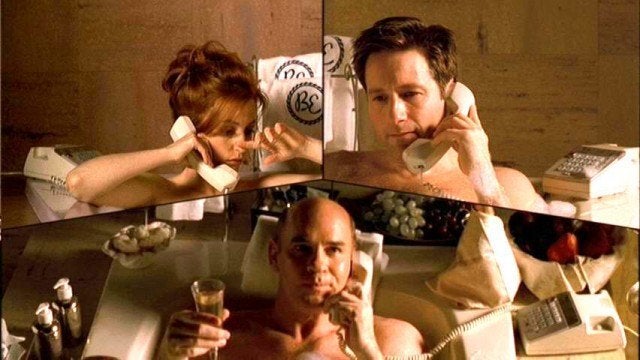 Schwartz participated in them personally, and, by the way, he says all parapsychological abilities can be summarized through the idea of “nonlocal consciousness.” He feels we can access these states through “intentioned focused awareness,” like Buddhist meditation. You’ll like this—he even quotes Max Planck: “I regard consciousness as fundamental,” Planck said in 1931. “I regard matter as derivative from consciousness. We cannot get behind consciousness. Everything that we talk about, everything that we regard as existing, postulates consciousness.” This focus on consciousness—I humbly suggest—is picking up a trend that’s been present in parapsychology research since the 1960s, one suggesting that ESP is highly correlated with altered states of consciousness. Schwartz even mentioned inducing this kind of extraordinary perception through marijuana, psilocybin, or LSD, drugs on which the government has also done experiments.
Schwartz participated in them personally, and, by the way, he says all parapsychological abilities can be summarized through the idea of “nonlocal consciousness.” He feels we can access these states through “intentioned focused awareness,” like Buddhist meditation. You’ll like this—he even quotes Max Planck: “I regard consciousness as fundamental,” Planck said in 1931. “I regard matter as derivative from consciousness. We cannot get behind consciousness. Everything that we talk about, everything that we regard as existing, postulates consciousness.” This focus on consciousness—I humbly suggest—is picking up a trend that’s been present in parapsychology research since the 1960s, one suggesting that ESP is highly correlated with altered states of consciousness. Schwartz even mentioned inducing this kind of extraordinary perception through marijuana, psilocybin, or LSD, drugs on which the government has also done experiments.
Take, for example, the top-secret Deep Quest experiments of 1977, carried out by the Navy. Critics of ESP claimed—just as you are—that a “sender” of some kind was required; that parapsychologists were “only” observing a highly advanced and as-yet-unclassifiable form of interpersonal communication, possibly one mediated by Earth’s ionosphere. They said that there was an ordinary mechanism: Regardless of time or distance, electromagnetic waves could be passing between sender and subject. These waves might contain electrical signals that could—like bits in a computer—be interpreted, consciously or unconsciously, as data.
In other words, the skeptics were asking: If ESP exists, why can’t we use it to find sunken treasure? Well, I’ll spare you the suspense, Scully—we did. Schwartz and other military personnel involved in Project Deep Quest, including Donald Walsh and Donald Keach, designed an experiment that would find lost ships—at oceanic depths at which even ELF waves can’t penetrate—by precognitive remote viewing. Not only did the viewers find marine wreckage with better-than-chance accuracy, but they also found ships that weren’t even on the Navy’s maps. They even described what the ships would look like—not just “a sunken ship,” I’m talking about seeing the exact pattern of wreckage and decay in their minds.
That’s pretty extraordinary, Scully. With all this evidence, aren’t you at least curious? Doesn’t part of you want to believe that we’re all interconnected by a grand, nonlocal consciousness that supersedes our petty individual lives? That we can, perhaps, use these primal psychic abilities to promote wellness and love instead of fear and anxiety? That we might, in the right frame of mind, see things we can’t see?
* * *
Sigh. I don’t know, Mulder, but I have to go. Call me back if you get any leads on that vampire thing.
Images of “The X-Files” © 20th Century Fox.







